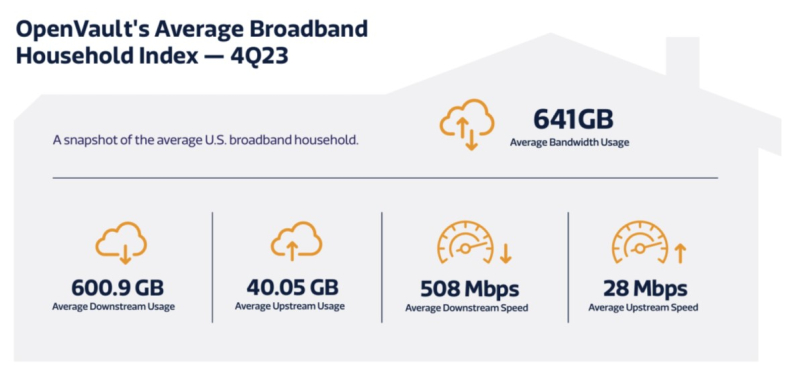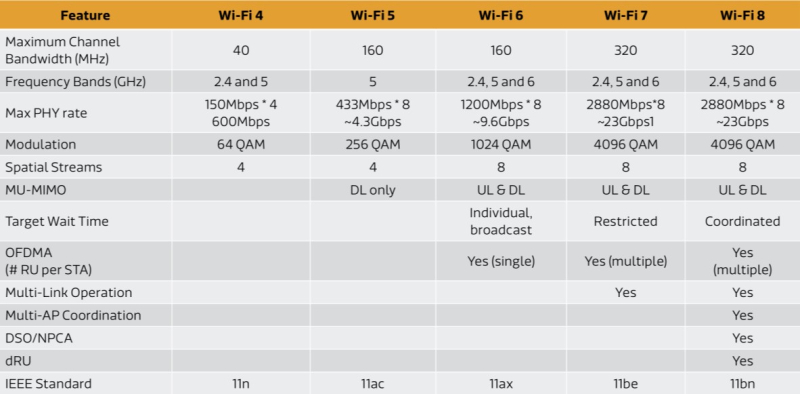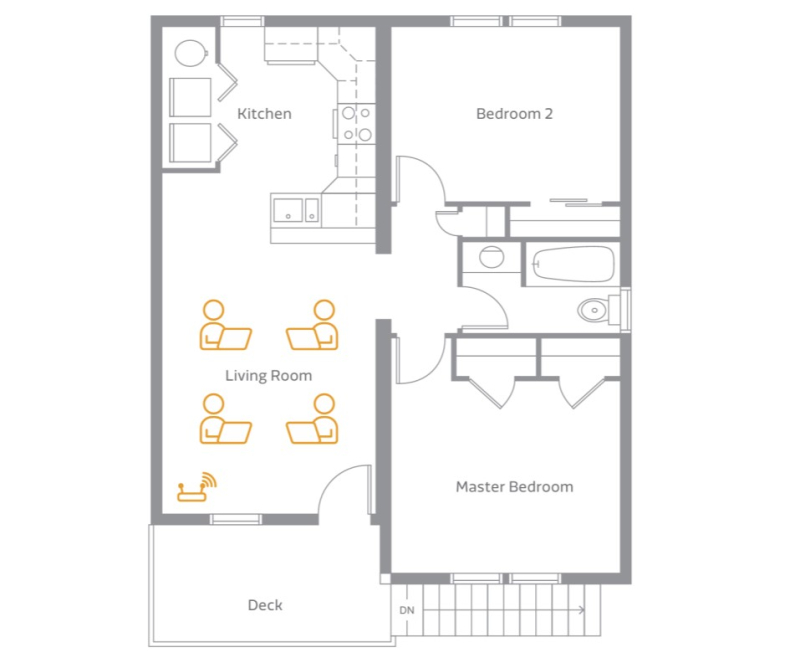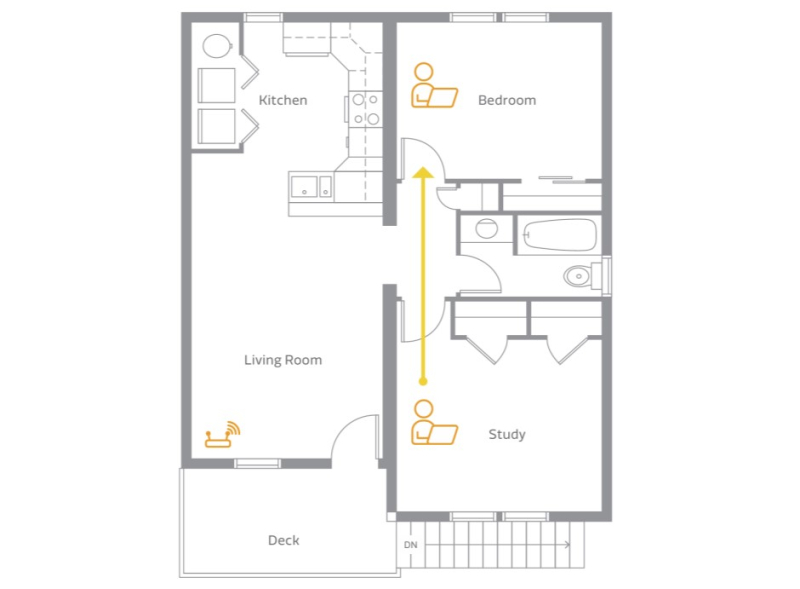Experts in the field of wireless technologies are already developing a new generation of Wi-Fi wireless communications – Wi-Fi 8. For now, the process is going on behind closed doors. However, it is already known that the new standard will focus not on pure data transfer speed, but on improving usability.

Image source: Sebastian Kanczok/Unsplash
Development of Wi-Fi 8, now known as IEEE 802.11bn Ultra High Reliability, will take at least several more years. Wireless Wi-Fi technology is in a state of constant improvement. Each step in the evolution of a technology usually takes years, during which its developers discuss, approve, and then deploy the new standard. Although Wi-Fi 7 is considered the “current version” of Wi-Fi, the standard has yet to be ratified.
However, this does not stop specialists from developing Wi-Fi 8. And some details have become known about the future technology. MediaTek’s wireless division Filogic has outlined what to expect from Wi-Fi 8, with the caveat that final details won’t be known until the standard’s final specification is adopted, which is expected to happen around September 2028. year.
The key aspect to think about in the context of the new Wi-Fi 8 standard is not peak throughput, but effective throughput. According to the Wi-Fi Alliance and MediaTek, the US is not the main driving force behind the evolution of wireless standards. This power is China. There are more than 650 million broadband Internet subscribers in the Middle Kingdom. More than a quarter of them have a 1 Gbps broadband connection in their homes. Overall, the average connection speed is 487.6 Mbps. The figure increased by 18% compared to last year.

Source of images here and below: MediaTek
In theory, 802.11bn or Wi-Fi 8 (IEEE Word Document) is designed to provide enough bandwidth to accommodate a multi-gigabit per second broadband gateway, and will take into account the ability of local area networks to provide even more efficient bandwidth. According to EverythingRF’s interpretation of a 2022 document called Project Authorization Request (PAR), the new standard should provide a minimum aggregate throughput of 100 Gbps.
In 2023, the PAR project was approved. His working group continued development. As of November 2024, MediaTek believes that Wi-Fi 8 will be virtually identical to Wi-Fi 7 in some key areas: the new standard will have the same maximum physical layer (PHY) speed of 2880 Mbps x 8 or 23 Gbps /With. It will also use the same three frequency bands (2.4, 5 and 6 GHz) and the same 4096 QAM modulation with a maximum bandwidth of 320 MHz per channel.
Obviously, a typical Wi-Fi 8 router will not provide 23 Gbps of throughput. According to MediaTek, actual peak throughput in a “clean” or laboratory environment will be about 80% or so of the hypothetical peak throughput of the new standard. Under normal conditions, the figures will be much lower.

To put it simply, Wi-Fi 8 should deliver roughly the same wireless throughput as Wi-Fi 7, using the same channels and the same modulation. Like every Wi-Fi standard before it, the new Wi-Fi 8 will be backwards compatible with its predecessors. However, Wi-Fi 8 will change the way client devices such as PCs or mobile devices interact with multiple access points. Over time, Wi-Fi has evolved from communicating between a single laptop and a router over a single channel to switching channels for different clients on different bands. When Wi-Fi 6 was developed, a dedicated 6 GHz channel was added, sometimes used as a dedicated “return path” between access points within a home network. Mesh networks are now more common, giving home devices multiple access points, channels and frequencies to choose from.
How Wi-Fi 8 will improve Wi-Fi technology
MediaTek sees several opportunities to improve coordination between access points and devices within a Wi-Fi network. It should be added that we are talking specifically about MediaTek’s opinion, because there is no final certainty that these proposals will be accepted and implemented by the Wi-Fi 8 standard development working group as a whole.
Coordinated spatial reuse (Co-SR). Spatial Reuse technology was first implemented in Wi-Fi 6. The disadvantage of the original technology was the difference in transmission power between the access point, which “accessed” a nearby device and simultaneously interacted with a second access point at a greater distance. If the first access point reduced its power to communicate with a nearby device, it could not be “heard” by the other access point.

Walls are the main obstacle to Wi-Fi signal transmission
Co-SR Wi-Fi 8 could be an evolution of spatial reuse technology. It can solve the communication problem between access points and ensure coordination between them to ensure the required signal transmission output power. “Our preliminary tests show that Co-SR can increase overall system throughput by 15 to 25 percent,” says MediaTek.
Coordinated Beamforming (Co-BF). This technique also aims to solve a fairly common problem with Wi-Fi communication between two devices in a home wireless network or in public places. Coordinated beamforming allows access points to communicate with each other and determine which devices need a signal and which don’t, and then adjust transmission to “divert” the signal away from a device that is not communicating with the network. “The throughput provided by Coordinated Beamforming (Co-BF) technology in the next generation MediaTek Filogic is significantly improved, with gains ranging from 20 to 50 percent in a mesh network with one Control AP and one Agent AP,” says MediaTek.
Dynamic subchannel operation (DSO). As you know, modern computer devices support the latest wireless data transfer standard Wi-Fi 7. However, not all of them provide the same bandwidth and connection speed. Previously, information about the signal transmission power of a particular device was transmitted and stored on the router for subsequent distribution of subchannels between signal recipient devices to avoid interference. In most cases this is not a problem. However, in situations where multiple devices are downloading the same file at the same time, for example, DSO creates a scenario where more advanced devices have access to a faster subchannel, which allows them to download that file faster. The difference between the old approach and the DSO in Wi-Fi 8 will be that the access point will be able to make subchannel allocation decisions based on the capabilities of each recipient device and their requests, and route data accordingly.

Typical Wi-Fi usage scenario: As you move around the house, the wireless data speed changes accordingly
According to MediaTek, DSO can increase data throughput by 80 percent compared to without the technology.
New data transfer rates. Wireless access points and their clients operate according to the MCS Index scheme. The index determines the RF modulation type, coding rate, guard interval and channel width. Combined, these parameters determine the theoretical data transfer rate. Essentially, this is a table that helps your Wi-Fi router determine what the connection speed should be so that you can connect and stream without errors. If your device’s bandwidth slows down as you move around your home, it’s partly because your device and router are “deciding” what connection speed your device should stream at.
MediaTek believes that the current transition to slower speeds is too abrupt and that additional gradations should be introduced, such as 16-QAM with 2/3 encoding speed. A finer gradation of RF modulation types will help improve overall transmission speeds by 5 to 30 percent, the company says.
The development of Wi-Fi 8 depends on how quickly the new standard goes through all the necessary licensing procedures. For example, it was expected that the same Wi-Fi 7 (802.11be) would be adopted back in September of this year, but this did not happen. The same PlayStation 5 Pro gaming console with Wi-Fi 7 support will not yet be shipped to India, since the country has not yet approved the 6 GHz wireless channel on which the Wi-Fi 7 standard depends.

Developing new wireless standards typically takes about six years, but equipment manufacturers are rarely willing to wait that long. As MediaTek notes, products supporting Wi-Fi 7 have been on the market since late 2023, even though the standard has not yet been formally approved. This is partly because the IEEE committee responsible for the standard rarely makes major changes between the approval of a draft standard and the final standard. As for Wi-Fi 8, the first consumer devices with support for it could appear in early 2028, even though final adoption of the standard is not expected until the end of that year.